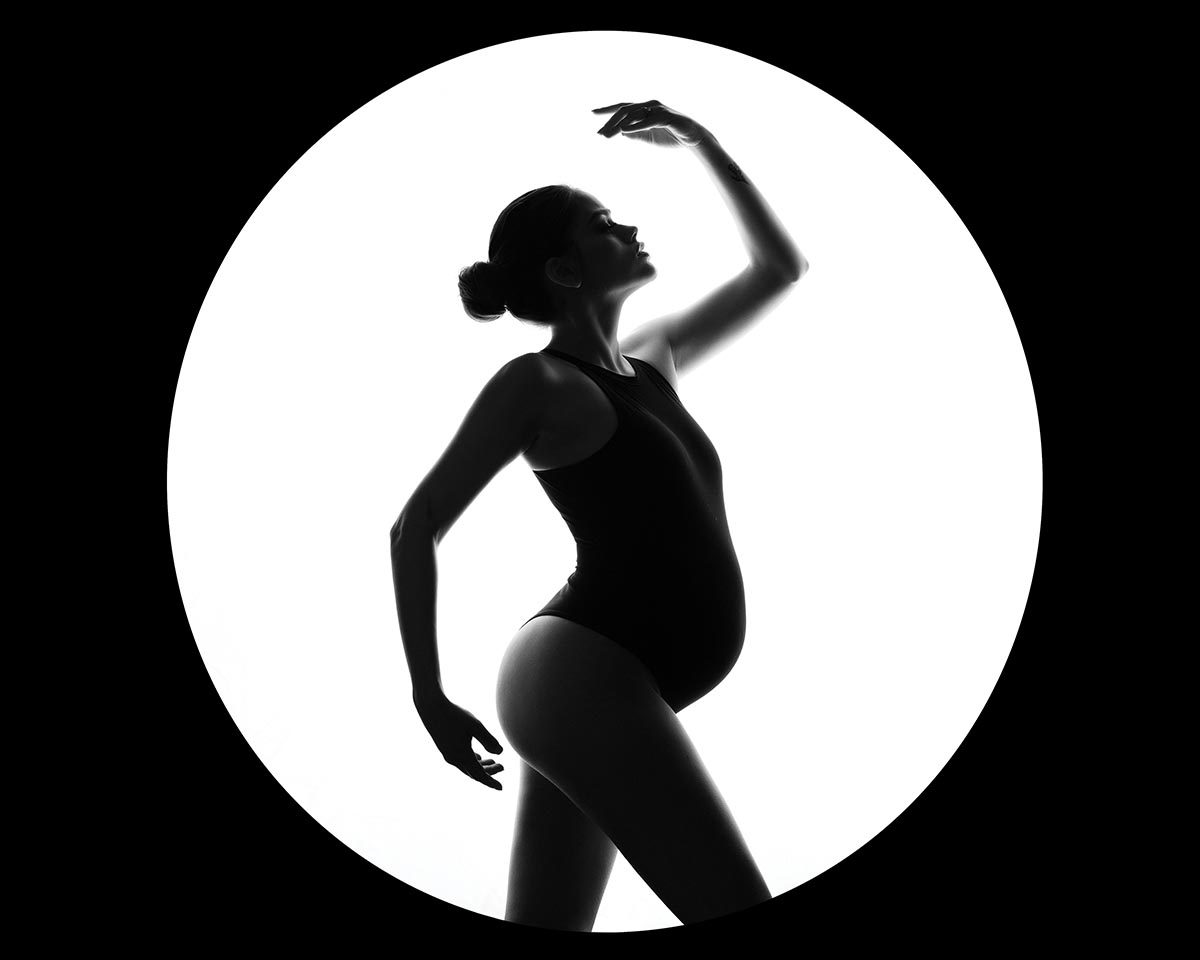
When Diana Robles launched Loveprint Photography in Hawthorne, New Jersey, it wasn’t her stated goal to become one of the most sought-after maternity and newborn photographers in the state. That result was more of an earned byproduct. Rather, she wanted to help women express the beauty in their journey to motherhood. That appreciation was something that had eluded Robles during her first pregnancy, when cultural norms about feminine beauty discouraged her from fully embracing the experience.
“Women’s bodies change so much during this time, and it’s hard to see the beauty sometimes because we’re trained to see so many of these changes as negative,” she says. “That made it difficult for me to enjoy the journey because I was so consumed by what I saw as imperfect.”
Robles understood how special the path to motherhood was in her life, and she resolved to help other people see the beauty in their own journeys. “I made it my goal to have every woman I work with feel beautiful and empowered,” she says. “I want them to leave with a feeling of how amazing it is to bring a life into this world.”
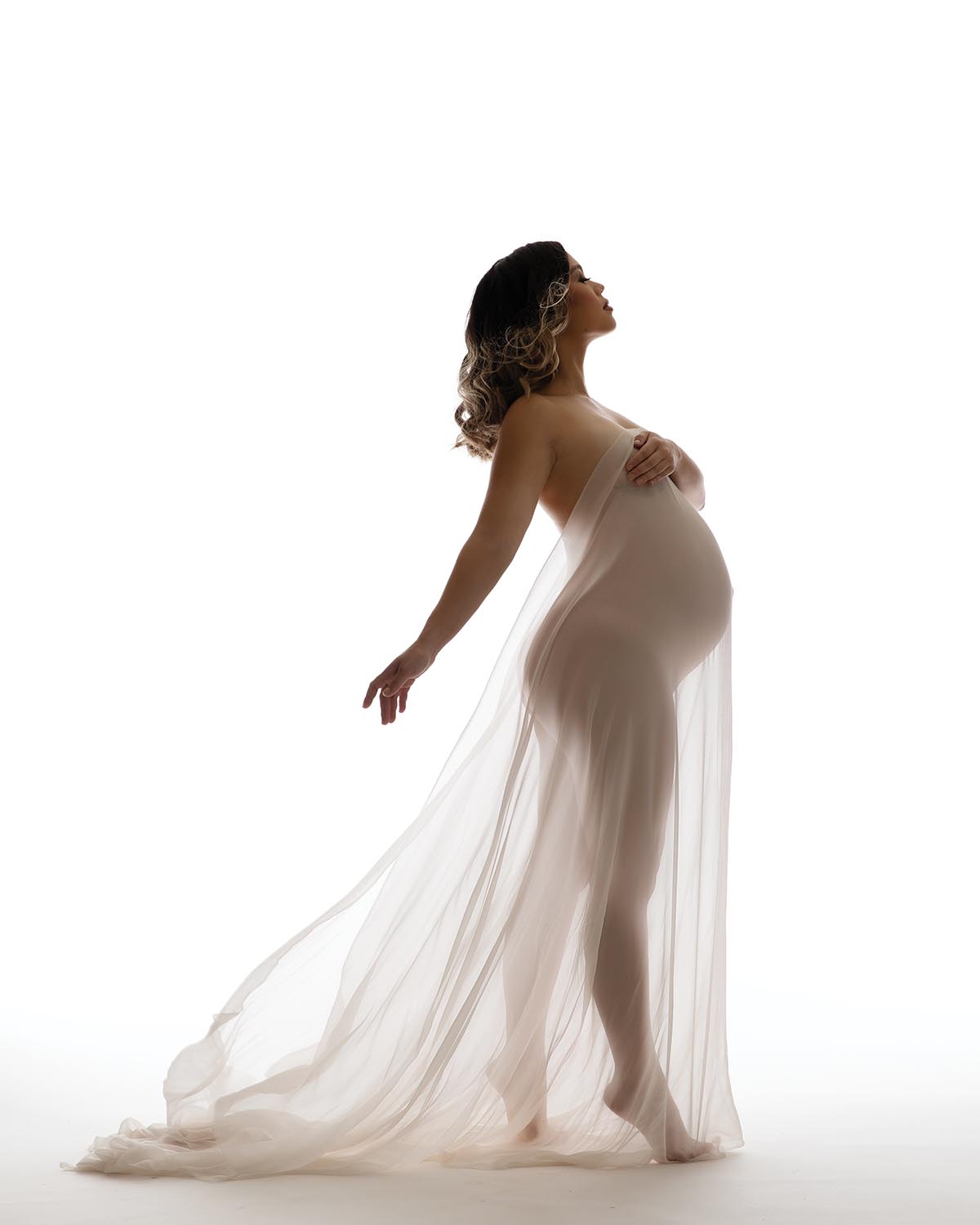
CONNECTION AND COMFORT
A personal connection is essential for bringing out confidence in an expectant mother, says Robles. She starts building that connection with a pre-session consultation that goes beyond cursory info gathering. Robles wants to hear each woman’s story so she can relate to them on a deeper level. When she’s able to connect with a client, their interactions resemble those of friends—open, relaxed, and willing to share.
Building that rapport isn’t always smooth. Some people tend to be guarded, and Robles can find it difficult to get them to open up. When an initial consultation isn’t going as well as Robles would like, she doesn’t push. Instead, she focuses on making the client comfortable and postpones asking personal questions.
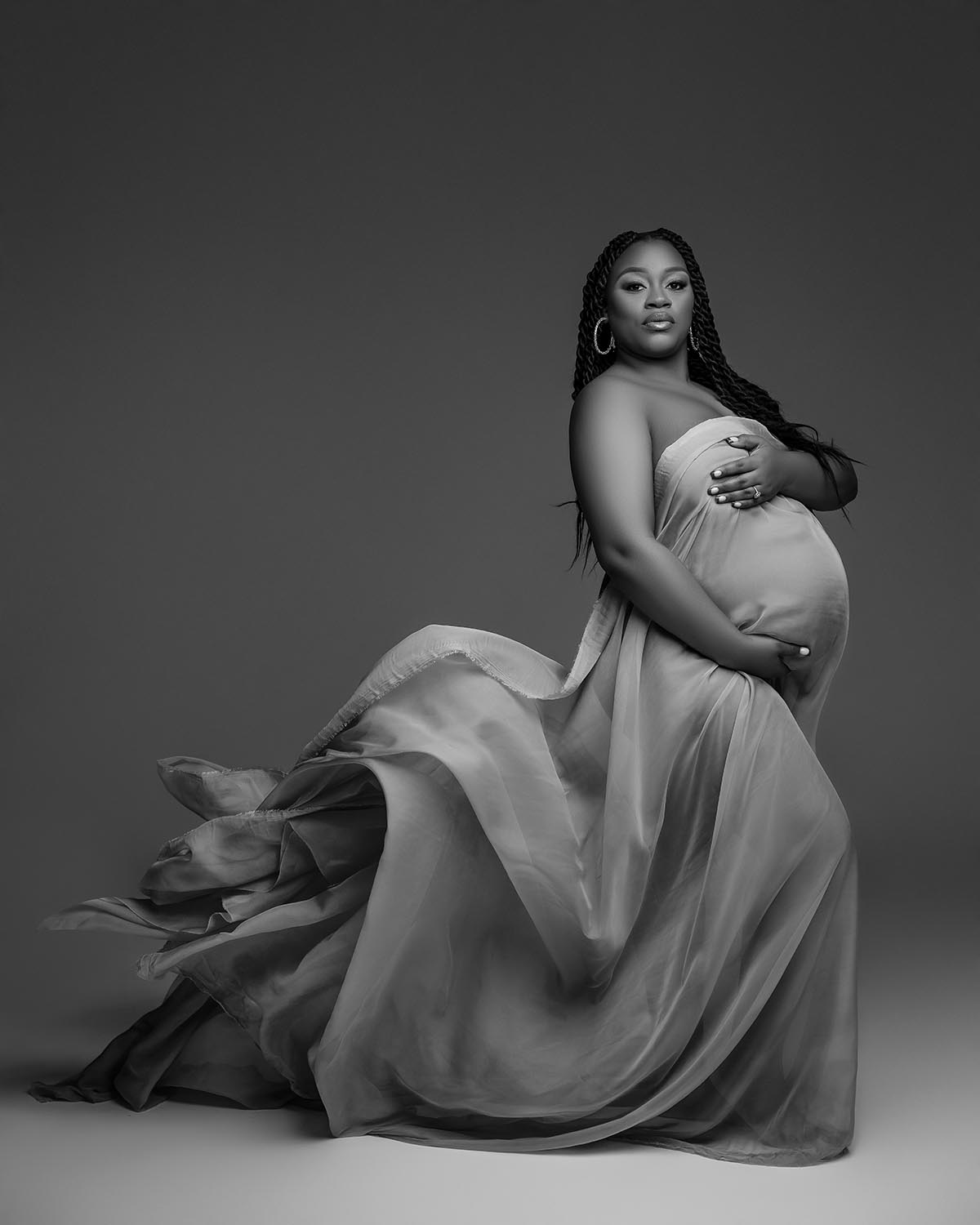
Robles communicates information about the session well in advance so clients know that their wishes and concerns have been addressed. Everyone is more at ease when they know there’s a plan in place and that all the details are being attended to.
Robles starts each portrait session by offering sincere compliments. And she keeps up the positivity throughout the process. Hair and makeup are part of every session, which provides a pampering experience for the client and gives Robles about an hour and a half to get to know them better.
Throughout the session, Robles asks for the client’s opinions, making it clear that she can remedy anything the client doesn’t like. “I’m demonstrating that we’re paying attention, that we are making this about them, and that they are, indeed, in good hands,” she says.

Eventually, even the most reserved clients let down their guard and allow themselves to feel comfortable. It’s not uncommon for one of her clients to tell Robles, “You made me feel like a goddess.” That’s when Robles knows she’s achieved the level of comfort she’s seeking from a client, which leads to freer creative rein during the portrait session.
For every session, Robles works from an established workflow and shot list, which is customized for each client. This allows her to have specific lighting setups ready in advance and to make efficient transitions. Robles photographs primarily on white paper. Based on her lighting setup, she can create a lot of variety in the images, allowing her to maximize options without having to move the client. Robles has specific images in mind to guide the setups she chooses. Variety is important as she tries to capture as many different looks as possible within each session.
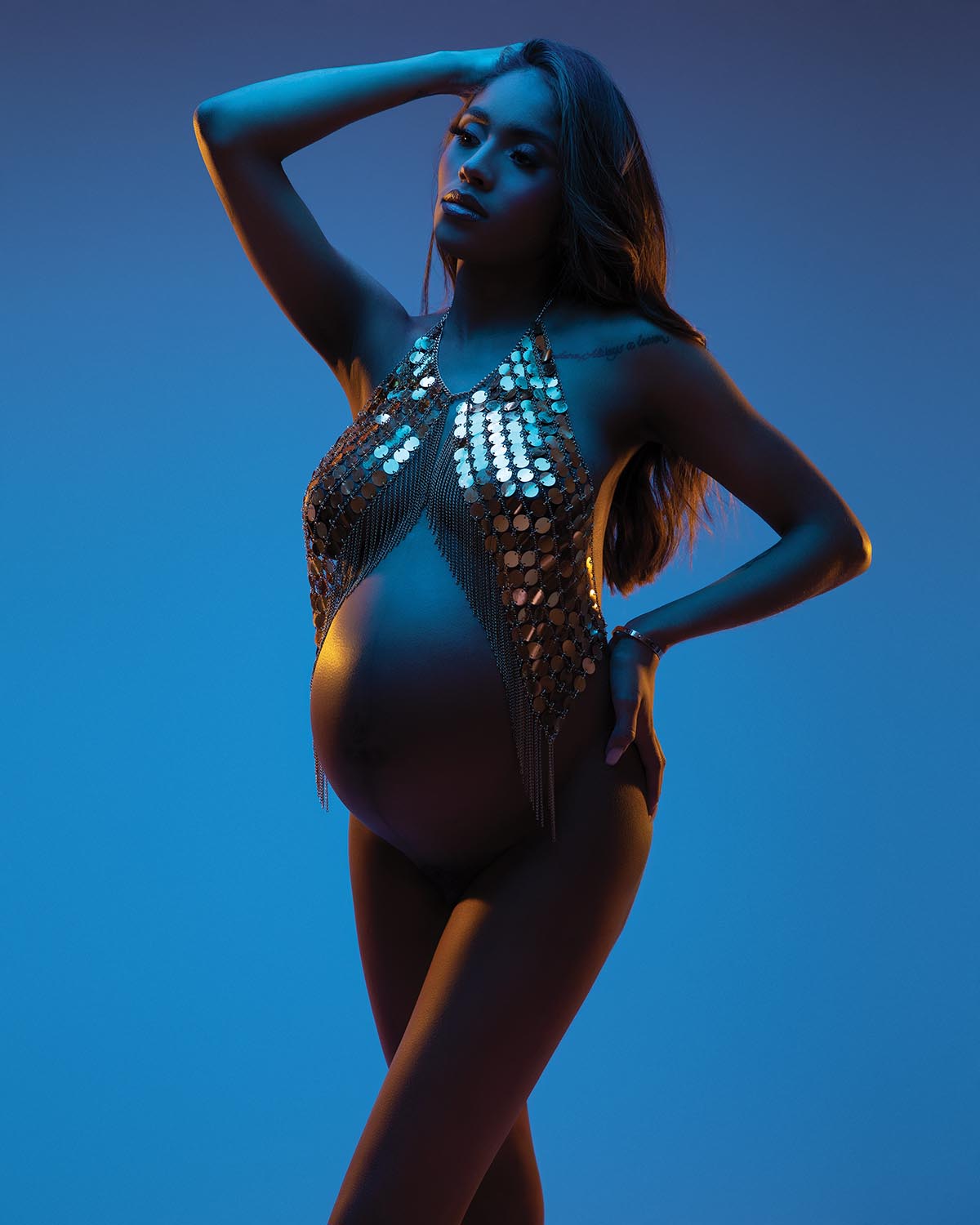
NEWBORN TRANSITION
Maternity and newborn photography are a natural combination. For clients who want to hire Robles to document the next stage of their motherhood journey, she offers newborn portraits as well as mommy-and-me sessions when the baby is around six months old. From the beginning of each new client relationship, Robles mentions that she does newborn and baby photography, but she doesn’t push. “When they come into the studio, they see examples of the newborn sessions, the props, the images, and they get inspired,” she says.
As in her maternity sessions, Robles uses a workflow and shot list for newborn and baby portrait sessions, which she customizes for each client and varies based on the baby’s behavior.
“It’s super important to have a workflow so everything is ready to go when the client arrives and you can maximize your time with the baby,” says Robles. “You need to transition between looks very quickly while the baby is sleeping.”
Robles typically starts with bean bag poses, then prop shots (with soft wood-grain mats, little baskets, and other pint-sized decor), then wraps up with parent-and-baby portraits. She uses a few different pre-arranged lighting setups, which typically involve lighting the baby from head to feet. She usually photographs down from the bridge of the nose, not up the nose, which can produce a distorted look.
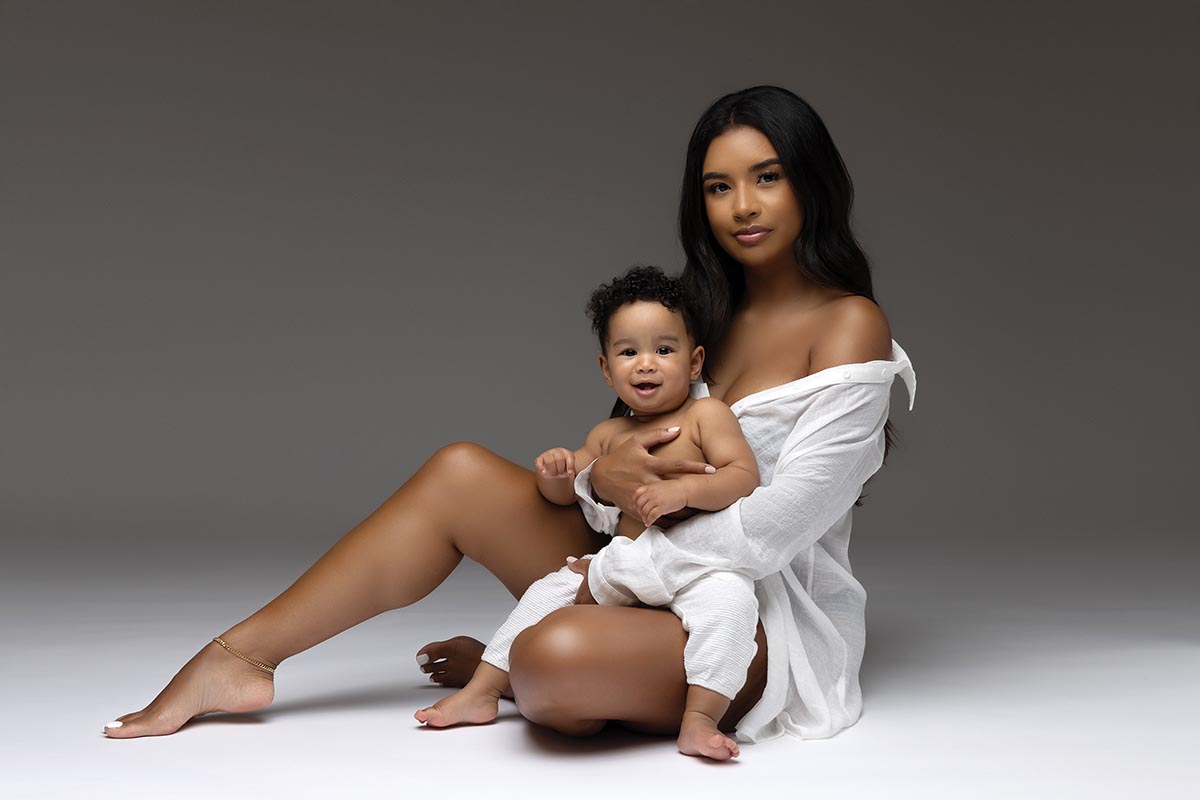
SAFETY AND PATIENCE
If the baby is awake or fussy, Robles still needs to get the most out of the session—and help the mother feel comfortable that she has the situation handled. Babies who are fussy or persistently awake can be swaddled in a little wrap or placed in a supportive basket. The swaddling sometimes calms the babies enough that they fall asleep and she can revert back to her original plan.
“The baby is the boss,” Robles says. “They determine how smooth the sessions are and what we do. You can’t tell them to sit still or close their eyes. I always tell parents we just have to relax and go with the flow. The session could take a couple hours or it could take four hours. That’s why we only schedule one newborn session a day so we have time to do what we need, take care of the baby, and go with the flow.”
Robles strongly recommends seeking out education about working with newborns before attempting a newborn session on your own. She has attended three workshops focused entirely on newborn safety to make sure she can meld creativity and safety in every session. “You may think you know what you’re doing, but it’s not as easy as it looks,” she says. “Go to a live class if you can. It’s useful to have hands-on experience and see the techniques in person versus just watching a few videos online.”
Once you’re secure in your safety knowledge, Robles urges slow movement and patience during newborn sessions. “Don’t rush the baby, and don’t rush the shot,” she says. If you push the pace, you risk agitating the baby and setting things back to square one.
Jeff Kent is editor-at-large.



